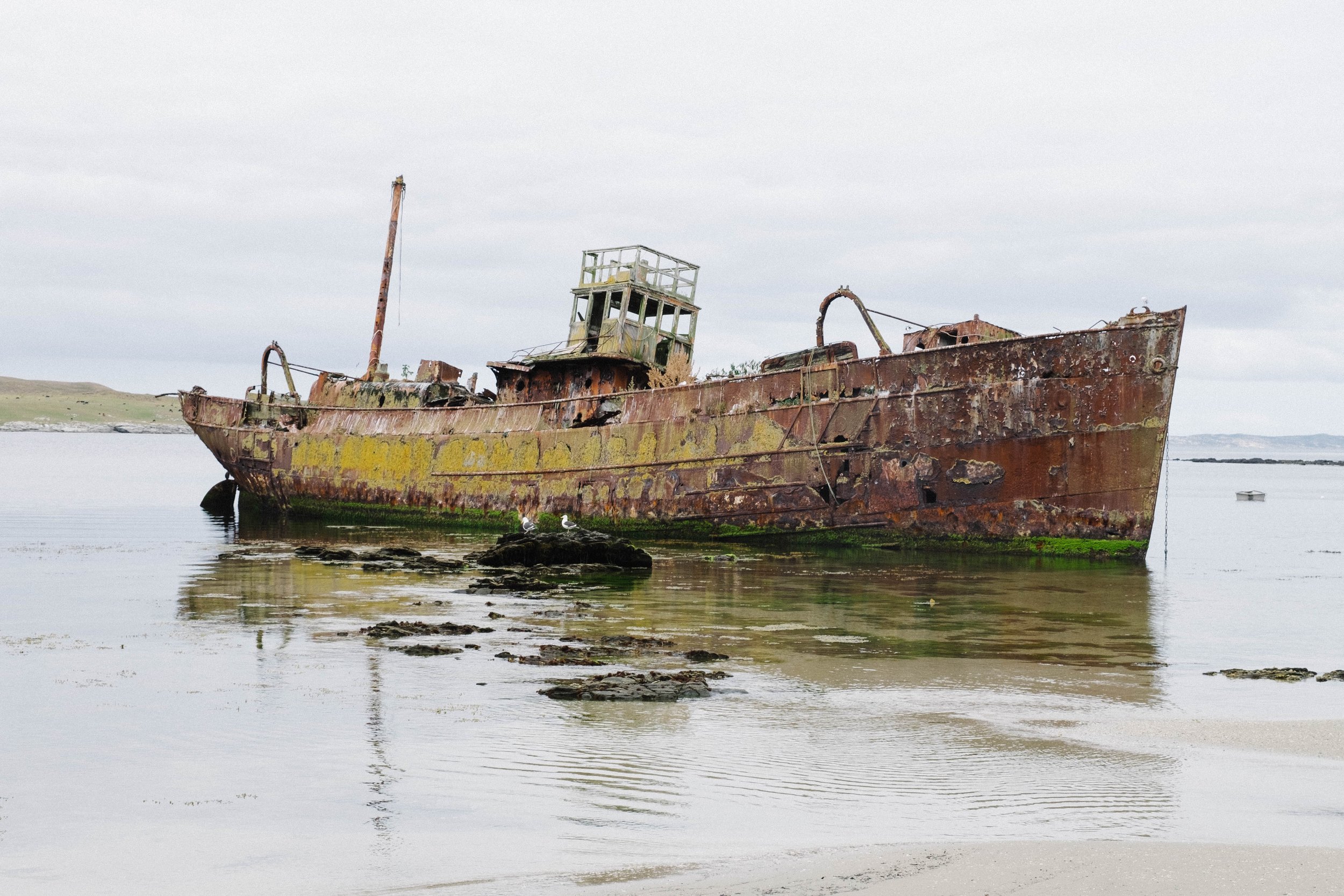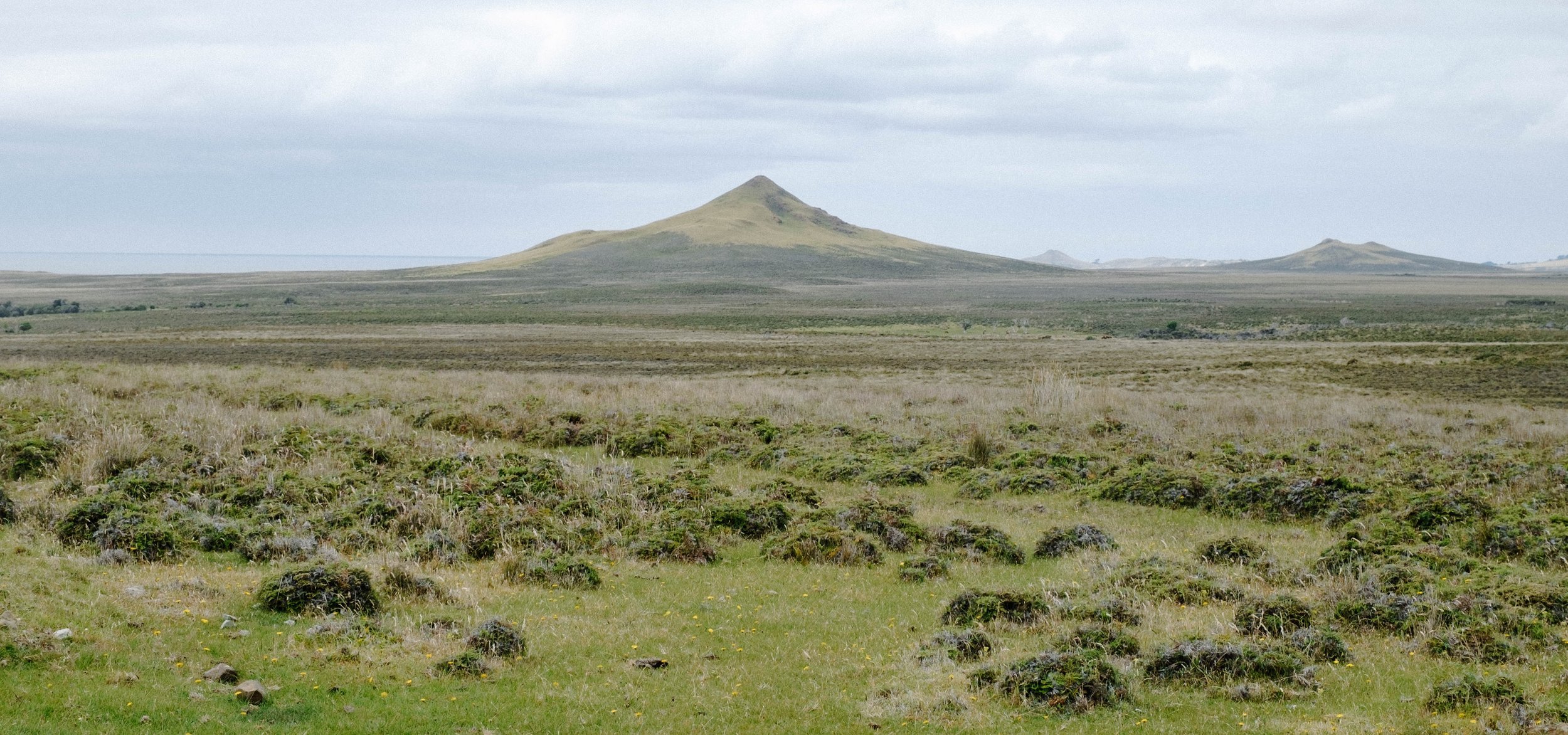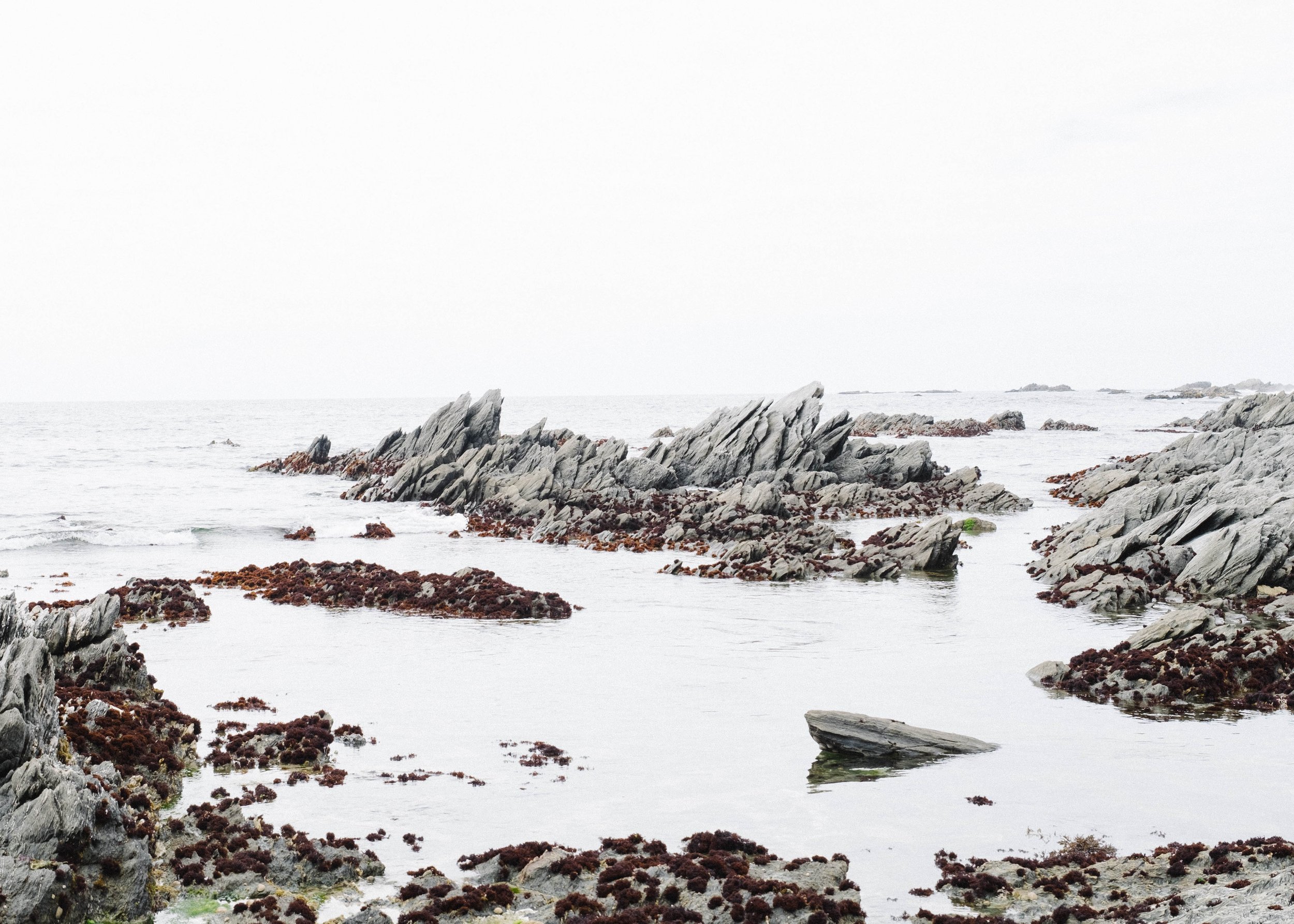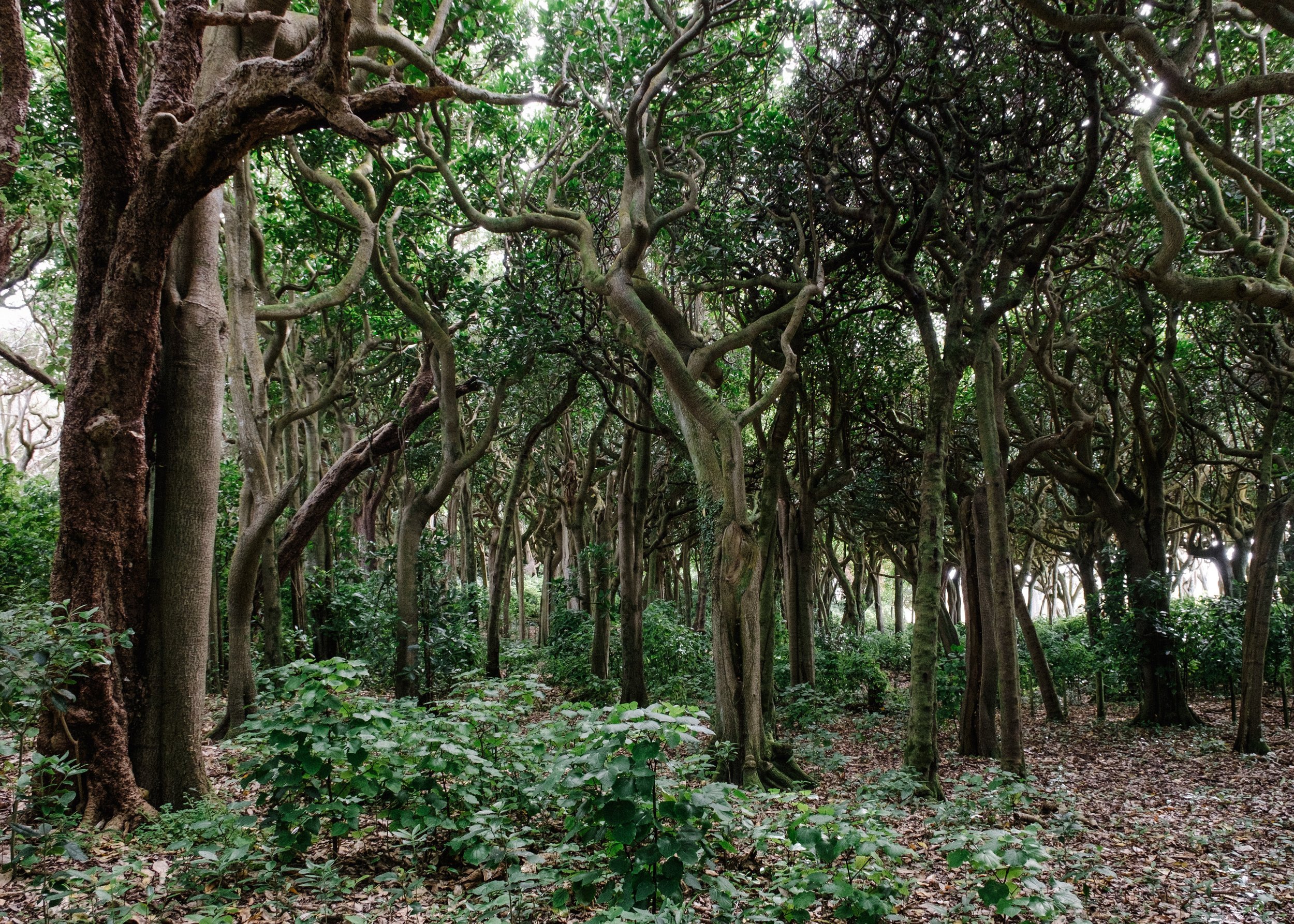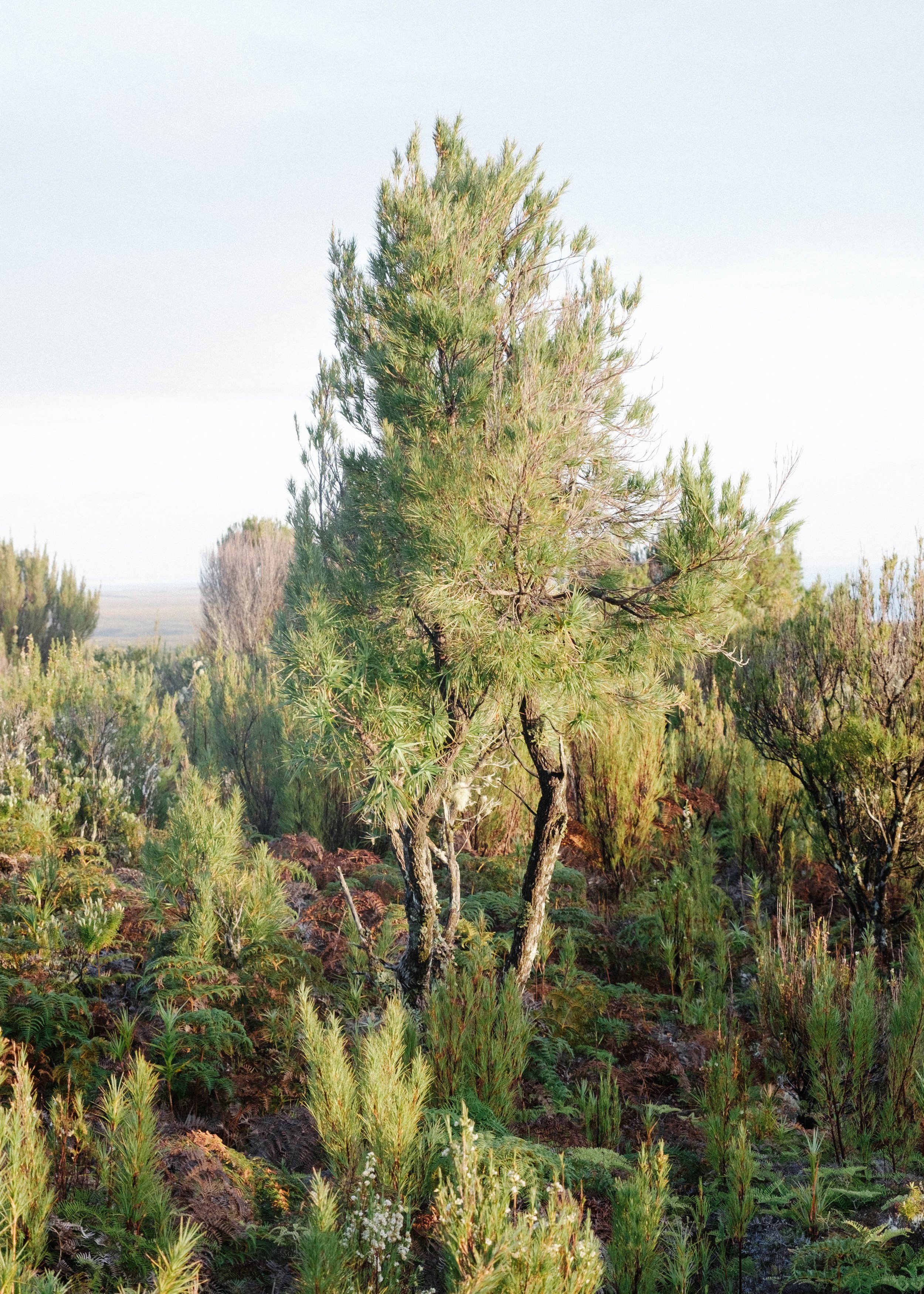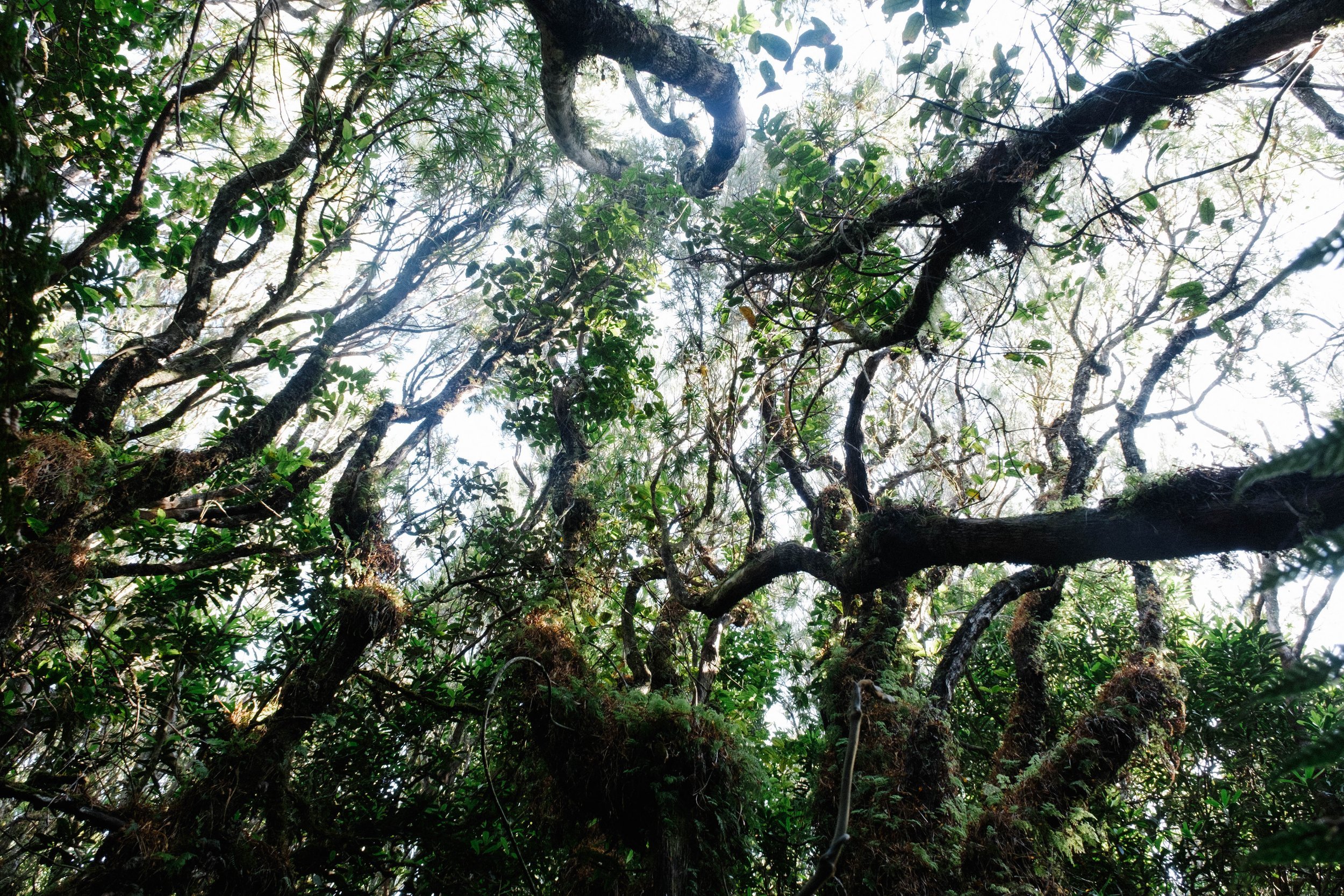Rēkohu
January 2023
The Chatham archipelago sits in its very own time zone, on a lonely emergent edge of the Chatham rise 900 km East of mainland Aotearoa. Rēkohu is the largest of the 10 islands, hosting approximately 700 residents, exactly 3 primary schools, and 1 doctor’s surgery. Endemic flora and fauna include; 1 freshwater galaxiid, 18 extant birds, and 47 endemic vascular plants. The islands are exposed to notoriously harsh weather with excessive wind, rain, and average temperatures reaching a whopping 18 degrees in the height of summer. Unsurprisingly, Rēkohu is Moriori for “misty skies”.
The geology of the Chatham Islands is diverse compared to the usual atolls that dominate the Pacific. The oldest rocks of the Chathams are predominantly metamorphic schist and greywacke, characteristic of rock formations found in mainland Central Otago. As the islands have been submerged for 65 of the last 70 million years, scattered limestone outcrops were formed from fossilised sea creatures resting on the seabed. Despite being the most tectonically stable location in New Zealand as of late, Rēkohu is also home to basalt columns and pointed lava domes (below) similar to those in Auckland, formed from ancient submarine eruptions long before the islands surfaced.
As the islands are reasonably young, the plants have recently diverged from those on the mainland, likely dispersed from the mainland by birds. While the usual suspects such as Coprosma, Melicytus, and Myrsine are present, all represented by unique endemic species, it is worth noting that Podocarps failed to jump the gap. As the islands were essentially a ‘blank canvas’ with every niche waiting to be filled, Shane my supervisor and travel buddy commented that evolution here was like “letting the kids out to play”. Examples of this opportunistic evolution can be seen with the climax Dracophyllum canopy and huge sub-antarctic-like mega herbs that are nothing like their mainland counterparts.
While the islands are steeped in rough anthropogenic histories with intertwining Moriori, Māori, and Pākehā conflicts, these tales are best left to be told by others.
Flowers
Before describing some of the the distinct ecosystems found across Rēkohu, it is worth giving a shoutout to the diversity of epic endemic flowers across the island. While the flowers of Aotearoa’s mainland can be impressive if you know where to look, the overwhelming majority of mainland plants bear small, white, discrete flowers that arguably lack excitement. In contrast, flowers of the Chathams are plentiful, vibrant, and extremely variable. Examples include the sunflower-yellow rautini (Brachyglottis huntii) also known as the Chatham Islands Christmas tree, the mellow-purple hangatere (Macrolearia semidentata), and the famous baby-blue forget-me-not (Myosotidium hortensia) much loved by botanists and retirees alike. Also pictured is the Chatham Island ice plant (Disphyma papillatum) coating the coastal schist outcrops, the Chatham Island greenhood (Pterostylis silvicultrix) of the forest floor, and the Chatham Island gentian (Gentianella chathamica subp. chathamica) of the peatlands. While this phenomenon has been noted by many, no one has answers as to why all these species put on such an impressive show. Maybe the bees over there just play hard to get.
Dunes
The coastal dunes of the chathams are comparable to those on the mainland with an abundance of Carex pumila and Pimelea villosa stabilising the mountains of sand. Above the dunes Macrolearia traversiorum, mysine chathamica, and harakeke surround limestone outcrops overlooking the aptly named Long Beach.
Kopi Forest
A wee hop inland off the dunes that encase the Rēkohu’s Northern extent sit the island’s kopi forests - moriori for karaka (Corynocarpus laevigatus). One such forest at hapupu on the northeastern side of the lagoon is famous for its moriori dendroglyphs aka tree carvings. These charasmatic characters and other artworks scattered on trunks throughout the forest are estimated at 300 years old. Sadly this forest has seen better days with the carvings barely visible and much of the canopy slowly dying creating a scrappy, abandoned feel. Interestingly, there is some debate as to whether kopi arrived on boats or in birds’ bellies. The consensus is that Moriori transported the seeds from Aoteroa to plant for food, yet some believe the forest ecosystems are far too established to be such a recent addition to the Chatham flora.
Southern Tablelands
The land in the bottom quarter of Rēkohu slowly slopes upward reaching heights just shy of 300 m at the island’s Southern extent before abruptly dropping off into the ocean bellow. These tablelands are part of an uninhabited conservation area with scattered lakes, bogs, and low fertility peat/heathlands accessable only on foot. The lakes in this area are stained so dark that the Chatham Mudfish (Neochanna rekohua) that inhabits their waters was only discovered in 1994, over 400 years after human settlement. The vegetation in this area gives North Island gum land crossed with Desert Road scrub. It is dominated by bracken, Chatham Island Mingimingi, and two species of endemic Dracophyllum. The Mingimingi (Leptecophylla robusta) is pictured amoung bracken with larger-than-mainland foliage and even larger fruit. A youthful Dracophyllum arboreum is pictured with its juvinile neinei-esque foliage bellow and the mature needle-like foliage atop.
Rangaika Old Growth Remnants
Perched above the coastal cliffs of the tablelands sits Rangaika, home to one of the few remaining patches of intact old growth forest in the Chatham Islands. This forest surprised with its thick understory of lush green ferns which contrasted the dull browns and greys found elsewhere on the island. The canopy trees pictured here are the aforementioned Dracophyllum arboreum which can grow up to 18 m tall. Their dead pine-like needles thickly coat the forest floor, standing as they fall like pins in a pin cushion.
Pseudopanax chathamicus are also present here (and also pictured), with mature leaves that are nearly identical to P. crassifolius, however, lacking the distict juvenile foliage of their mainland counterparts. It is suggested that this lost heteroblastic trait could be assossiated with an evolution free from Moa, reducing browse pressure, and therfore negating the need for defense.
Megaherbs & Monocots
Aciphylla traversii - Karamea karupuru, Chatham Island Speargrass
Aciphylla dieffenbachii - Soft Speargrass
Myosotidium hortensia - Kopakopa, Chatham Island Forget-Me-Not
Embergeria grandifolia - Pūhā pārākau rahi - Chatham Island Sow Thistle
Astelia chathamica - Chatham Island kakaha

